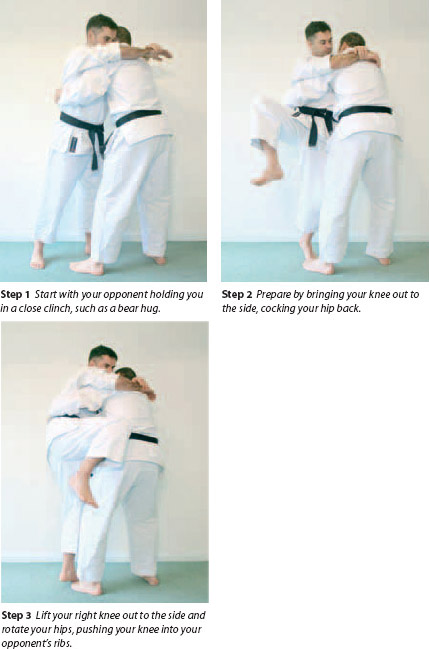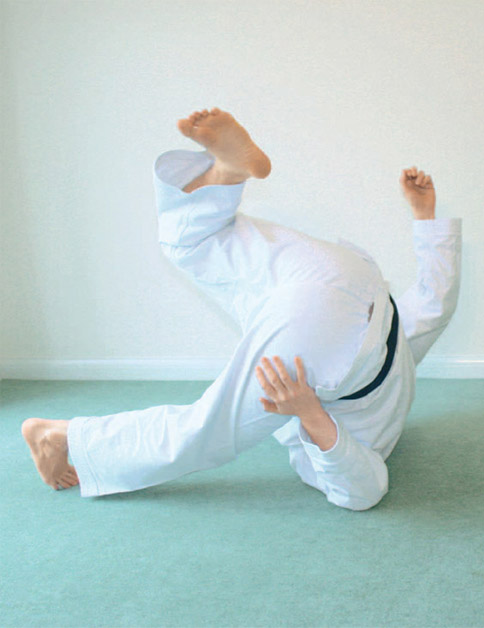
I fear not the man who has practiced 10,000 kicks once, but I fear the man who has practiced one kick 10,000 times.
~ Bruce Lee
Foot and Knee Strikes
Some martial arts consider kicks to be the best form of attack because the legs contain the biggest muscles in the body and produces the most powerful strike. Another advantage is that using your legs leaves your hands free for defense. Kicks can also have a superior range compared with a punch. Some martial arts put a low priority on kicks either because they can result in a loss of stability or because kicks are not allowed in their competitions.
The strikes shown in this chapter are common in taekwondo, karate, kung fu, and Muay Thai. The front kick and the knee strike are the easiest to master as they mostly use actions found in normal everyday activities. All the other kicks are more difficult, either because they require rotation or because they use a hip action that you may not be used to or that your flexibility does not allow.
Both leg strength and flexibility will make your kicks more powerful. If, like in taekwondo, you wish to master the flashy high kicks, then you should work on your flexibility too. Kicking beyond your comfortable range of motion will increase the risk of injury. The stretching chapter later in this book, looks at a variety of stretches that you can incorporate into your training. Remember that mastering the most advanced kicks and increasing your flexibility take times.
Once you have mastered the technique with these kicks you can think about introducing some targeting exercises by using a strike shield. This can help you to ensure that your kick is both travelling in the right direction and that it is making contact with your intended target.
| SUMMARY OF KICKS | |
| Front kick | Fast, straight, easy to use attack |
| Roundhouse kick | Powerful circular attack |
| Side kick | Slow but powerful straight attack |
| Back kick | Powerful straight attack |
| Spinning hook kick | Circular attack |
| Tornado kick | Advanced circular attack |
| Knee strike | Powerful close range attack |
| Flying knee strike | A launched knee strike, giving it greater range |
| Curve knee strike | A short range attack using the knee in a circular motion |
FRONT KICK
The front kick is the easiest kick to master and can be used as a defensive stopping attack, as a stealthy and quick self-defense kick or as a flashy head level kick. In taekwondo, it is called ap chagi, in karate, this kick is called mae geri and in Muay Thai it is called teh trong.
When using a front kick, you should hit with the ball of your foot. To do this, point your foot at the target and pull your toes back.
The front kick has many potential target areas, for example, the body, the shins, the groin and, of course, the head. A low front kick is less likely to be caught by a defensive maneuver from your opponent than a higher kick.


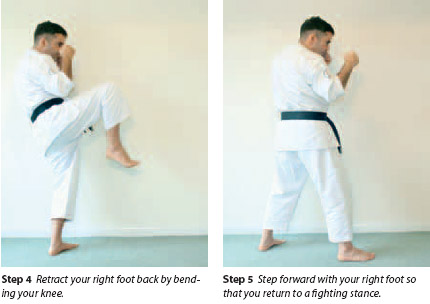
ROUNDHOUSE KICK
In taekwondo, this kick is called dolryo chagi, in karate, it is called a circular kick, mawashi geri and in Muay Thai it is known as Teh Tud. It is probably the most popular of all the kicks in martial arts contests that allow them. It uses a big hip rotation to generate power and this action can make the roundhouse kick difficult to learn. However, once you have mastered the hip action, it becomes a fast and powerful technique. A clean hit to the head will often cause a knockout, making this kick popular in fighting contests where this is the main objective, for example kickboxing and MMA contests. The ability to throw a roundhouse kick to the head takes on particular importance in kyokushin-kai karate, and WTF taekwondo contests where head punches are not permitted but head kicks are allowed. There are three contact areas that are commonly used with this kick.
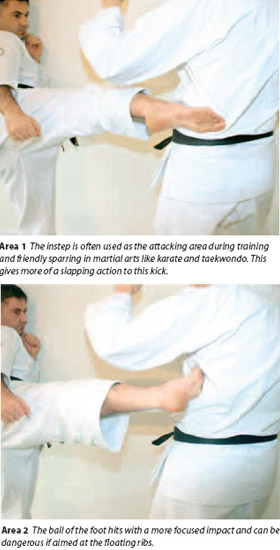
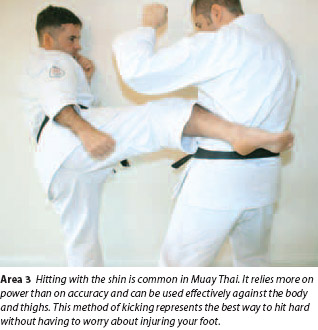
The roundhouse kick is useful when targeted at the body, particularly against opponents with a strong high guard. A low roundhouse kick aimed at the legs is often used in Thai boxing and MMA fights as a way to reduce an opponent's mobility. In contests where attacks directed at the legs are not allowed, it is often still possible to sweep the legs using a motion very similar to a low level roundhouse kick.
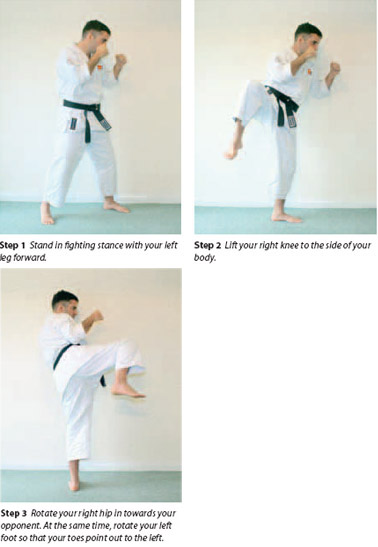
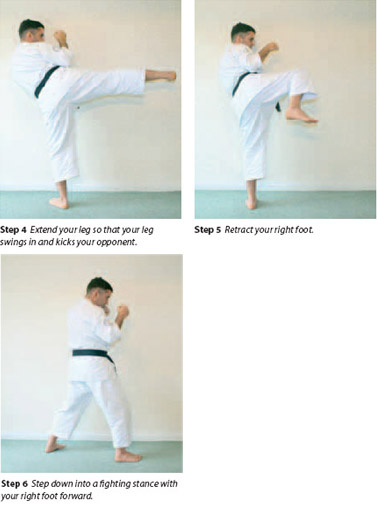
If your opponent has a strong guard, then an isolated roundhouse kick to the middle level is likely to be blocked. It is therefore important that this kick is not used in isolation. By using high level attacks, you can draw your opponent's guard up, creating an opening for a roundhouse kick.
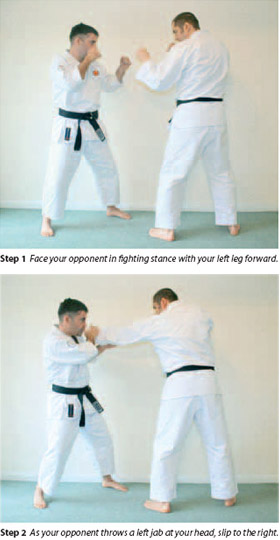
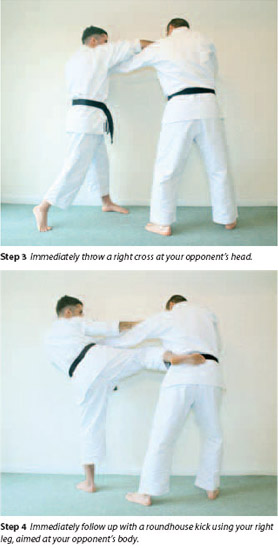
SIDE KICK
This is an impressive looking kick that requires leg strength, flexibility, and balance to perform correctly. There are two distinct ways to use this side kick. One way is to thrust the kick, pushing through to full extension. This type of kick is good for pushing an opponent back or stopping an oncoming opponent. The other way is to snap the kick back, shooting the kick in and then once the impact has occurred, to pull it back out again. Doing the kick this way reduces the chance of an opponent catching your leg while also allowing you to quickly follow up with another attack. In taekwondo, this kick is called yop chagi and in karate it is known as yoko geri. This kick requires a big hip rotation and side flexibility. It is not uncommon it to take students many years of practice to master it.
Your contact area for this kick is your heel. Your toes should be pulled in and your foot should be slightly angled down.
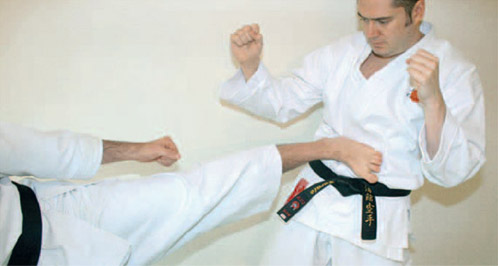
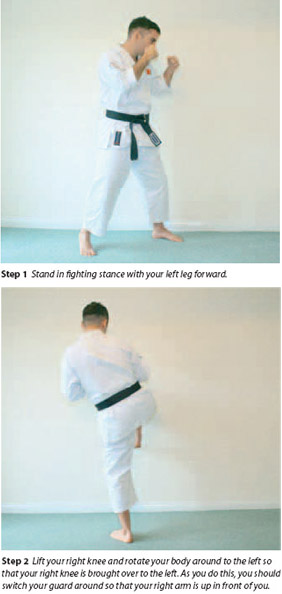
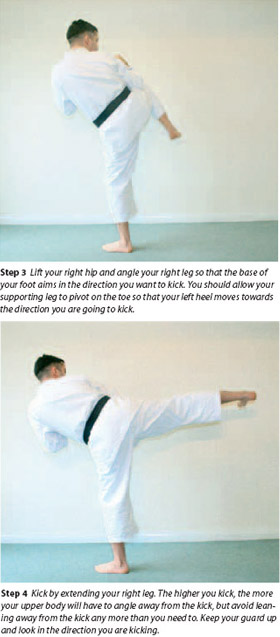
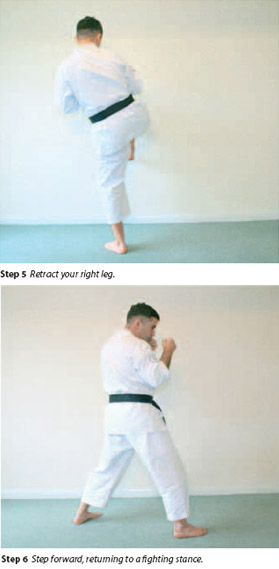
While this kick looks impressive when thrown to the body or head level, it is not as practical as a low level kick in self-defense situations. A more realistic application of the side kick is as a low level kick aimed at an opponent's knee. You can practice this with a sparring partner, preferably at a safe slow speed so as to avoid damaging the knee.


BACK KICK
Kick boxers call this the turn back kick or just turn kick. In taekwondo, this kick is called dwi chagi and in karate it is called back kick, ushiro geri. It uses a strong thrusting action that is difficult to stop but because it shoots backwards, it can also be difficult to aim. The best target for this kick is at your opponent's stomach or solar plexus. Watch out for counter attacks. If your opponent sees this kick coming, then it is all too easy to side step and either punch you while you are facing the wrong way or even to get hold of your leg as this kick can be comparatively slow.
The contact area of this kick is predominantly the heel of your foot. Try to angle your foot downwards and pull your toes in.

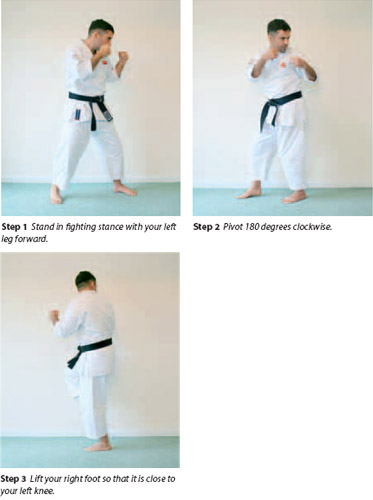

SPINNING HOOK KICK
This kick is most commonly seen performed by taekwon-do practitioners who call it the hook kick, huryeo chagi. It is also practiced in karate, where it is called a back reverse circular kick, ushiro ura mawaashi geri. In Muay Thai, it is called a spinning heel kick, teh glub lang.
For friendly sparring, the safest way to contact with this kick is to use the base of your foot. In full contact fights it is more common to use the heel.
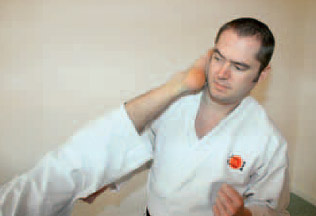
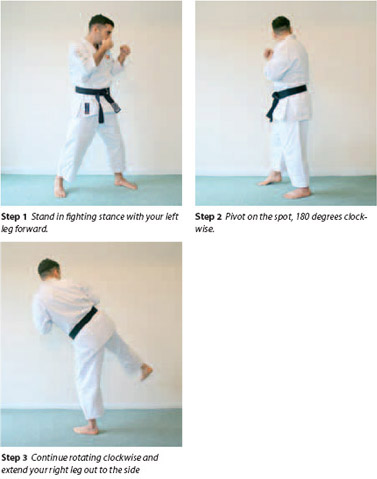

You can use the hook kick in combination with the roundhouse kick. For example, this would mean kicking your opponent on one side with a roundhouse kick and then hooking around to catch them also on the other side. The disadvantage of this kick is that there is a moment where you are turned away from your opponent.
TORNADO KICK
This impressive looking maneuver uses a full 360-degree rotation to build up extra rotational energy while also confusing your opponent. It is initially a difficult technique to learn and requires that you are first comfortable with how to do a roundhouse kick smoothly and quickly before adding the extra rotation. This technique is mainly seen in taekwondo contests, where a well-placed technique can land a knockout blow.
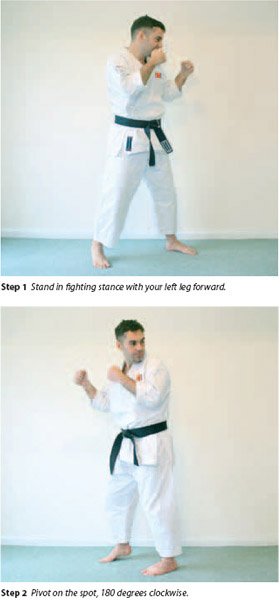

KNEE STRIKE
The knee strike is a powerful close range attack that can be used against an opponent's body. This technique is disallowed in most combat sports but is permitted in MMA and Muay Thai fights. It is also an important self-defense technique. The most commonly used knee strike is the straight knee, which involves thrusting the knee straight forward or up into the opponent's body or head. Often it is used while holding the opponent in a double collar tie, a maneuver that is called hak kor aiyara in Muay Thai.
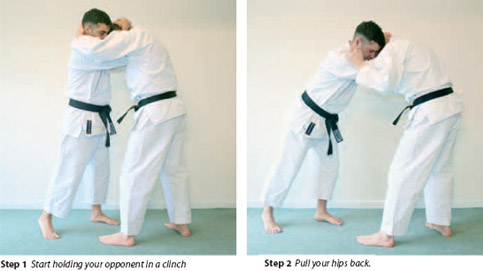
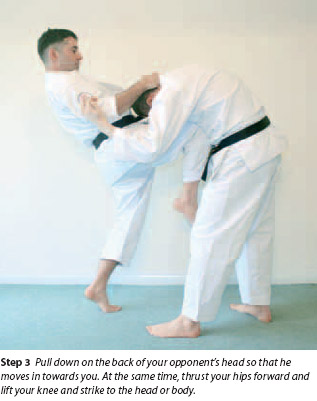
FLYING KNEE STRIKE
You can also use this technique at range by launching yourself forward. This is called the flying knee or, in Muay Thai, Hanuman thayarn. Although charging in with a flying knee can be a reckless move, it does overcome somewhat the limited range of the front knee strike and has a proven track record in MMA fights of getting a quick knockout when fighters have managed to connect with the head.
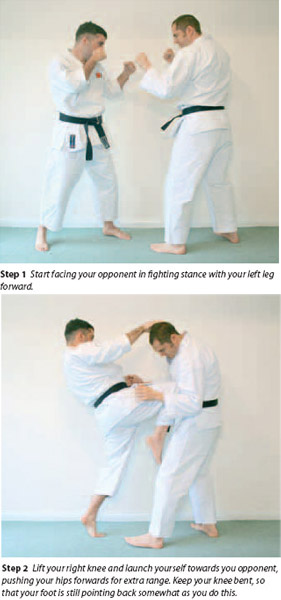
CURVE KNEE STRIKE
Another way to use a knee strike is to lift your hip out to the side, so that the knee comes in from the side in a circular path, similar to a hook punch. This is called a curve knee or a side knee. It can be used at an even closer range than the front knee. The action used to perform this technique is similar to the roundhouse kick but strikes with a bent knee.
